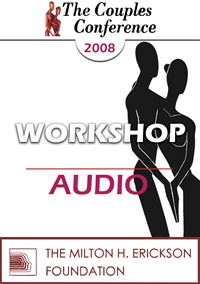CC08 Workshop 12 - The Loving/Warring Brain: How the Brain, Mind and Body Interacts and Reacts to Intimacy - Stan Tatkin, PsyD
- Average Rating:
- Not yet rated
- Topic Areas:
- Workshops | Couples Therapy | Neuroscience | Intimacy
- Categories:
- Couples Conference | Couples Conference 2008 | Pioneers in Couples and Family Therapy
- Faculty:
- Stan Tatkin, PsyD, MFT
- Duration:
- 2:08:28
- Format:
- Audio Only
- Original Program Date:
- Apr 27, 2008
- License:
- Never Expires.
Description
Description: This workshop explores a developmental psychobiological approach to intimacy, showing how the brain’s automatic responses, attachment styles, and arousal levels shape relationship dynamics. It covers how subtle cues like eye contact and microexpressions reveal emotional states, and why co-regulation is key to managing conflict. The approach supports using longer, more frequent sessions to help couples stay connected and repair quickly when things go wrong.
Syllabus Description: Is our brain built for love or war, connection or self-preservation? The attachment drive for a secure base involves neurological and neuro-endocrine systems and subsystems that determine such things as proximity seeking and contact maintenance. Couples most commonly enter therapy due to repeated, anticipated, and intense periods of mutual dysregulation whereby attachment injuries and adaptations become reanimated. In order to make the most of attachment theory, the psychotherapist must incorporate a working knowledge of the neurobiological processes that underlie all primary attachment relationships.
Educational Objectives:
- To describe how to identify and treat dysregulated couples.
- To describe two interventions that promote interactive regulation.
*Sessions may be edited for content and to preserve confidentiality*
Credits
Handouts
| Ericksonian Learning Snapshot (249.7 KB) | 2 Pages | Available after Purchase |
Faculty

Stan Tatkin, PsyD, MFT Related Seminars and Products
Stan Tatkin, PsyD, MFT, is a clinician, researcher, teacher, and developer of A Psychobiological Approach to Couple Therapy (PACT®). He has a clinical practice in Calabasas, CA, where he has specialized for the last 15 years in working with couples and individuals who wish to be in relationships. He and his wife, Tracey Boldemann-Tatkin, developed the PACT Institute for the purpose of training other psychotherapists to use this method in their clinical practice.


